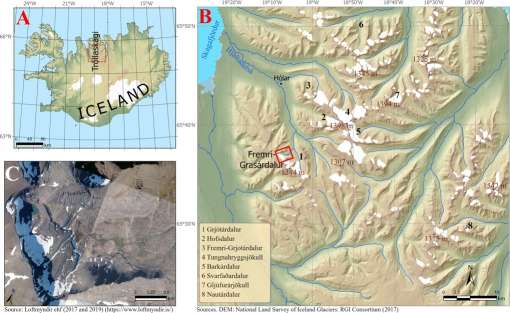
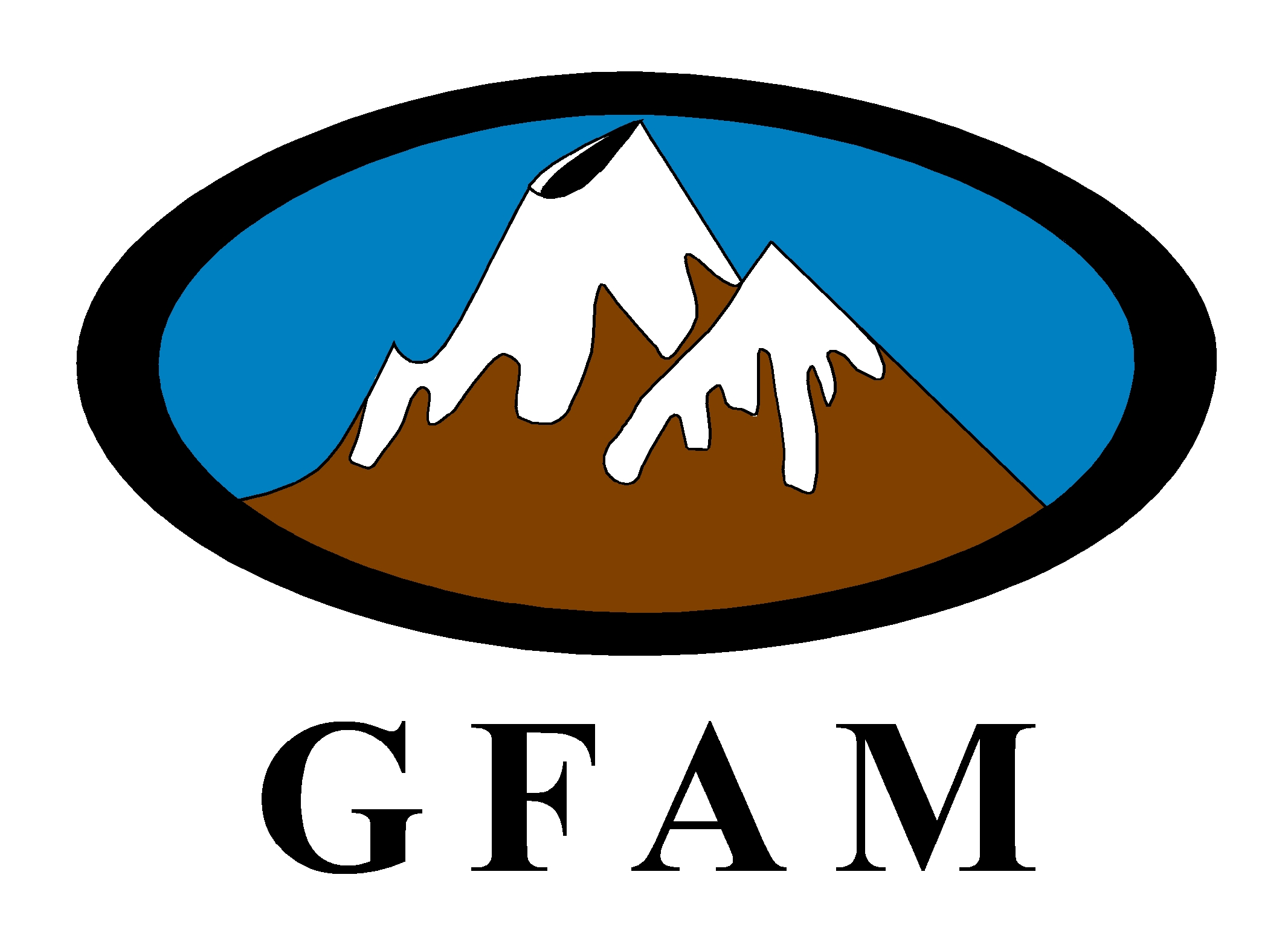
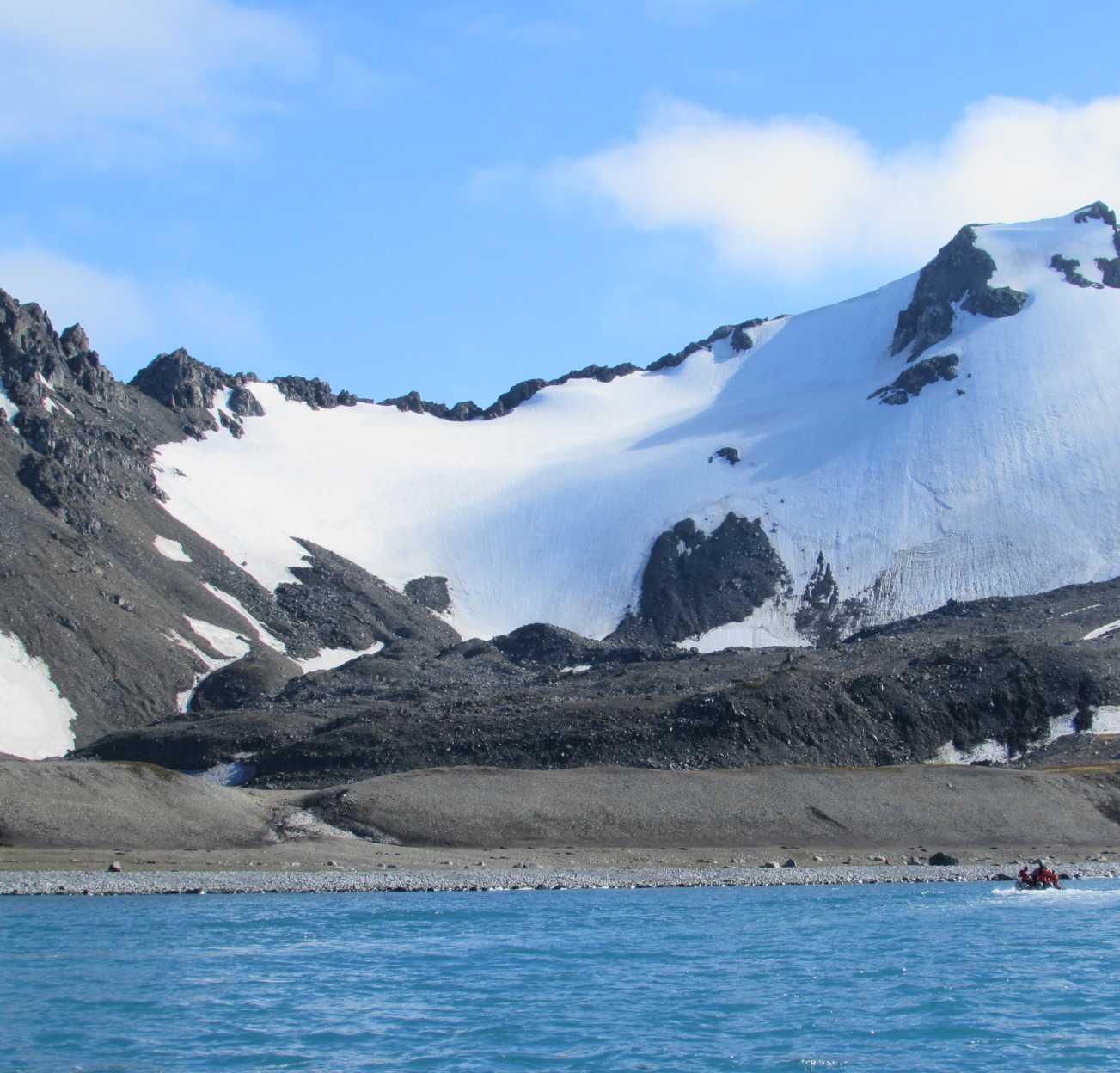
RESEARCH GROUP IN PHYSICAL GEOGRAPHY OF HIGH MOUNTAINS (GFAM)
Grupo de Investigación en Geografía Física de Alta Montaña (GFAM)
![]()
Presentation of the GFAM
The Research Group "High Mountain Physical Geography" (GFAM) belongs to the Department of Geography of the Complutense University of Madrid. It was founded on the teaching of Professor Julio Muñoz Jiménez in 2008. Since then, the GFAM has carried out his activity uninterruptedly, thanks to the financing obtained by its projects, from open national and international calls. The members of the GFAM are from researchers already consolidated to those who have just started. The GFAM has the highest national and international prestige, due to its high scientific production and the extension of its research areas, which include mountains from three continents and all the possible latitudinal variety. The GFAM pays special attention to the training of young researchers in all the stages. At present, researchers trained in the GFAM work in varied research centers in Europe and America. The GFAM collaborates with many other research groups from around the world related to the High Mountain and the Cryosphere. In addition, it promotes the PIOLET DE HONOR award, dedicated to researchers whose prolonged activity has supposed an important advance in the knowledge of the High Mountain.
The development of activities of GFAM comes with the objective: To evaluate the impact of climate change in the cryosphere found in the mountains of the earth in the shape of glacier, rock glacier, snow cover and subsurface permanent ice (permafrost), to know the implications of same in the landscape dynamic and, in the organization of territory and its habitability. Maintaining this perspective, the GFAM is constructed within the following lines of research: impact of current climate change in the cryosphere; evolution of the cryosphere; cryosphere and risk prevention and criosphere and biodiversity. The main areas of study are: Mountains of Iberian Peninsula (Pyrenees, Cantabrian Mountains, Trevinca Massif, Iberian Range, Central Range, Sierra Nevada); Iceland (Tröllaskagi Peninsula); Mexico (Stratovolcanoes of de Popocatépetl, Iztaccíhuatl, Pico de Orizaba and Colima); Peru (Cordillera Blanca and Pariacacá Mountains and stratovolcanoes in the south of the country); Chile (Tierra de Fuego) and Antarctica (South Shetland Islands and the Antarctica Peninsula).
![]()
Presentación del GFAM
El Grupo de Investigación “Geografía Física de Alta Montaña” (GFAM) pertenece al Departamento de Geografía de la Universidad Complutense de Madrid. Fue fundado a partir de la docencia del profesor Julio Muñoz Jiménez en el año 2008. Desde entonces ha realizado su actividad de forma ininterrumpida, gracias a la financiación obtenida por la aprobación de sus proyectos, en convocatorias nacionales e internacionales abiertas. Los miembros del GFAM son desde investigadores ya consolidados a los que se acaban de iniciar. El grupo tiene el máximo prestigio nacional e internacional, debido a su elevada producción científica y la extensión de sus áreas de investigación, donde se incluyen montañas de tres continentes y de toda la variedad latitudinal posible. El GFAM presta una especial atención a la formación de jóvenes investigadores en todas sus etapas. En la actualidad, investigadores formados en el GFAM trabajan en centros de investigación muy variados de Europa y América. El GFAM colabora con multitud de otros grupos de investigación de todo el mundo relacionados con la Alta Montaña y la Criosfera. Además, promueve el premio PIOLET DE HONOR, dedicado a investigadores cuya prolongada actividad haya supuesto un importante avance en el conocimiento de la alta montaña.
El GFAM desarrolla sus actividades con un objetivo principal: Evaluar el impacto del cambio climático en la criosfera que se encuentra en las montañas de la Tierra en forma de glaciares, glaciares rocosos, cubierta nival o hielo subsuperficial permanente (permafrost), para conocer sus consecuencias en la dinámica del paisaje y la organización del territorio y su habitabilidad. Con esa perspectiva el GFAM trabaja en las siguientes líneas de investigación: impacto del cambio climático actual en la criosfera ; evolución de la criosfera; criosfera y prevención de riesgos y criosfera y biodiversidad. Las principales áreas de estudio son: las Montañas de la Península Ibérica (Pirineos, Cordillera Cantábrica, Macizo de Trevinca, Sistema Ibérico, Sistema Central y Sierra Nevada); Islandia (Península Tröllaskagi); EEUU (Cordillera de las Cascadas); México ( estratovolcanes de Popocatépetl, el Iztaccíhuatl, el Pico de Orizaba y el Colima); Perú (Cordillera Blanca, la Cordillera Pariacacá y estratovolcanes del sur del país); Chile (Tierra de Fuego) y Antártida (Península Antártica e islas Shetland del sur)
NOTICIAS

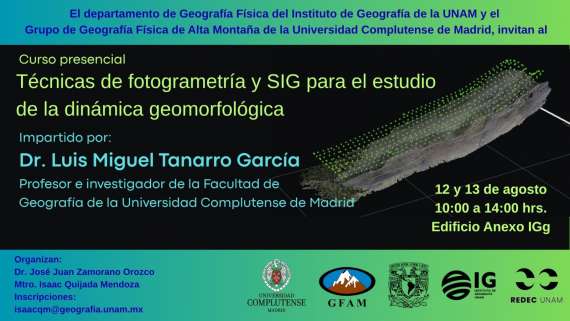
Curso de técnicas de fotogrametría y SIG para el estudio de la dinámica geomorfológica
Impartido por el Dr. Luis Miguel Tanarro en el Departamento de Geografía Física del Instituto de Geografía de la UNAM (México), 12 y 13 de agosto de 10:00 a 14:00 horas (Edificio Anexo IGg)
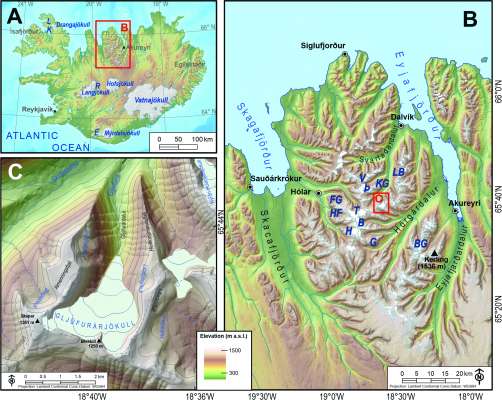
Nueva publicación en abierto en Boreas: "Late-Holocene Evolution of a Small Sub-Arctic Glacier, Gljúfurárjökull (Tröllaskagi, Northern Iceland)"
Trabajo de campo en la estación científica de Tarfala (Suecia), en los glaciares del macizo de Kebnekaise en el marco de los proyectos NEOICE (PID2020-113798GB-C32) y KEBNE (Interact) (14-31 julio, 2024)
Nueva publicación en Catena: Assessing the effect of climatic forcing on the landscape evolution of a mountainous setting: A case study of the northern flank of Sierra de Gredos (Central Spain)
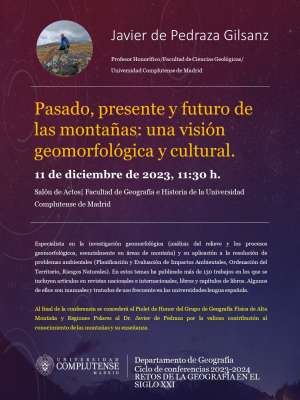
Conferencia “Pasado, presente y futuro de las montañas: una visión geomorfológica y cultural” impartida por el Dr. Javier de Pedraza Gilsanz
11 de diciembre de 2023, 11:30 h. Salón de Actos | Facultad de Geografía e Historia, Universidad Complutense de Madrid
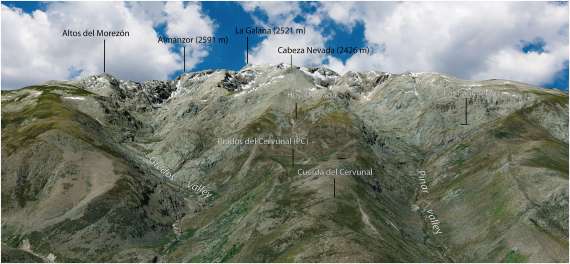
Nueva publicación en Quaternary Science Reviews: "The Prados del Cervunal morainic complex: Evidence of a MIS 2 glaciation in the Iberian Central System synchronous to the global LGM"
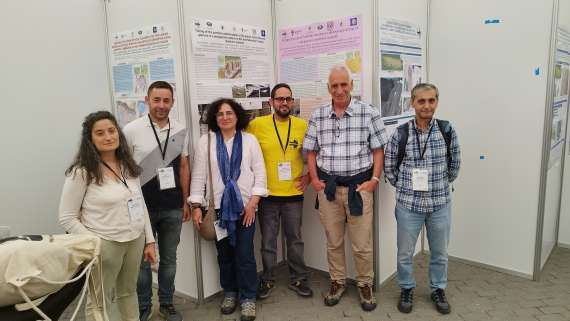
Participación en la European Conference on Permafrost 2023 (18-22 de junio)
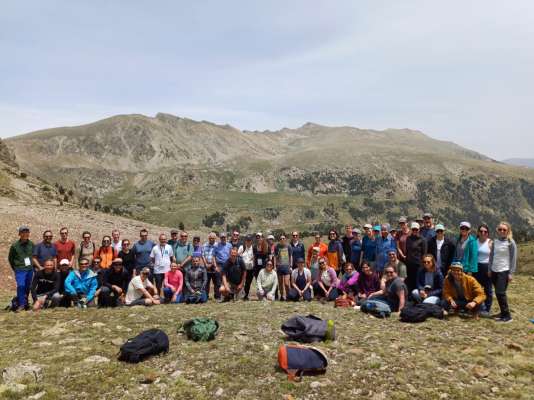
Excursión a los glaciares rocosos de Perafita y a las huellas glaciares del entorno de Puigcerdà
21 de junio de 2023. European Conference on Permafrost
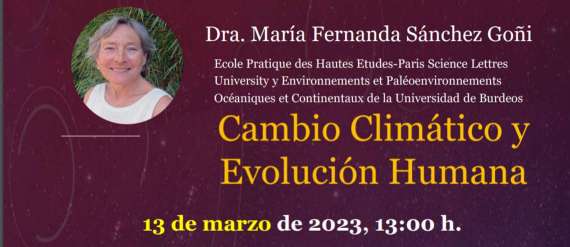
Conferencia: “Cambio climático y evolución humana” por la Dra. María Fernanda Sánchez Goñi (Universidad de Burdeos).
13 de marzo de 2023, 13:00 h. Salón de Grados | Facultad de Geografía e Historia, Universidad Complutense de Madrid
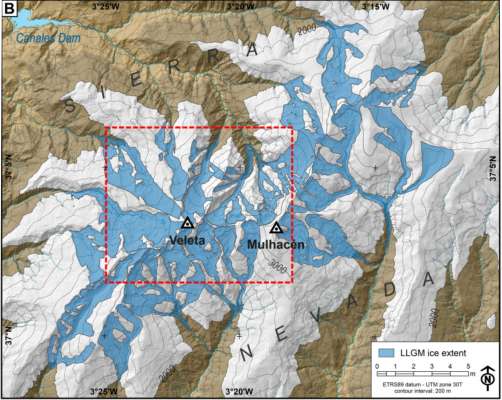
Nueva publicación en Quaternary Science Reviews: Climate sensitivity and geomorphologic response of cirque glaciers from the Late Glacial to the Holocene, Sierra Nevada, Spain
Through a detailed geomorphological study, including thourough mapping of the geomorphic features as well as 10Be Cosmic-Ray Exposure (CRE) dating, the geomorphological evolution of the Mulhacén cirque since the maximum ice extent of the last glacial cyc
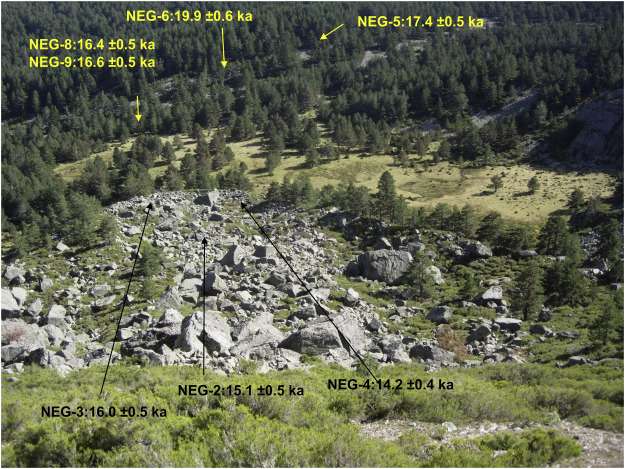
Nueva publicación en Geomorphology “Glacial stages in the Peña Negra valley, Iberian Range, northern Iberian Peninsula: Assessing the importance of the glacial record in small cirques in a marginal mountain area”
The objective of this study was to assess whether it is possible to obtain a comprehensive record of the last deglaciation from the small Peña Negra glacial cirque in a marginal mountain range in the Iberian Range (northern Iberian Peninsula).
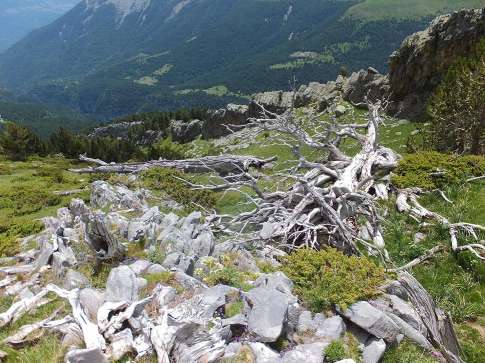
Nueva publicación en Mediterranean Geoscience Reviews “Neoglaciation in the Spanish Pyrenees: a multiproxy challenge”
This paper tries to synthesize the knowledge on the Neoglacial period in the Pyrenees to identify the most relevant paleoclimatic events (particularly those relating to the behavior of glaciers) and the main gaps for future studies.
 portada para facebook CRYOPERU_not_tb.jpg)
Nueva publicación del proyecto CRYOPERU “Dry season circulation type classification applied to precipitation and temperature in the Peruvian Andes”
El artículo analiza la circulación atmosférica en niveles altos (500 y 200 hPa) mediante un método de clustering (k-means) para obtener una clasificación de tipos de tiempo meteorológico sobre Perú durante la estación seca. Se evalúa ...
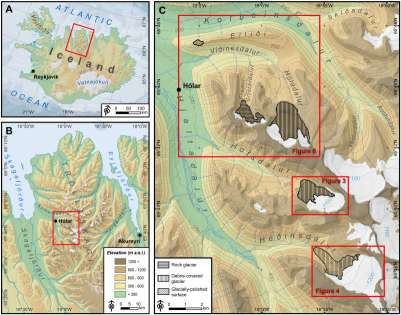
Nueva publicación en Geomorphology “Constraints on the timing of debris-covered and rock glaciers: An exploratory case study in the Hólar area, northern Iceland”
Anyone clicking on this link before June 08, 2020 will be taken directly to the final version of your article on ScienceDirect: https://authors.elsevier.com/a/1awce,3sl3mxfv
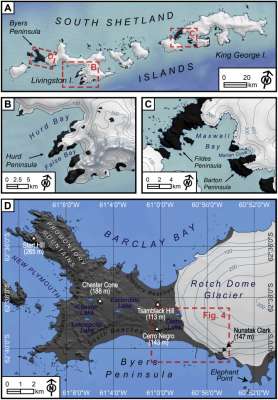
Nueva publicación en Quaternary Science Reviews “Timing of formation of neoglacial landforms in the South Shetland Islands (Antarctic Peninsula): Regional and global implications”
Anyone clicking on this link before May 07, 2020 will be taken directly to the final version of your article on ScienceDirect: https://authors.elsevier.com/c/1alc4-4PRt~Rh
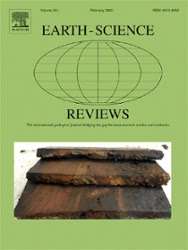
Nueva publicación en Earth-Science Reviews:"The deglaciation of the Americas during the Last Glacial Termination"
https://doi.org/10.1016/j.earscirev.2020.103113
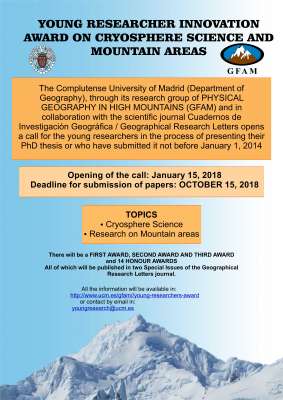
CONCEDIDOS LOS PREMIOS YOUNG RESEARCHER INNOVATION AWARD ON CRYOSPHERE SCIENCE AND MOUNTAIN AREAS
PREMIADOS: Michaela Kňažková, Carla Tapia Baldis, Jesús Revuelto, Alfonso Pisabarro y Catarina Romão Sequeira
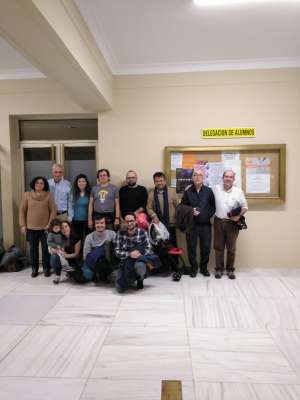
El GFAM celebra un año más la Navidad y la llegada del Nuevo Año 2020
La celebración reúne a la mayoría de los miembros del GFAM y recibe a los investigadores de la UNAM, los doctores Esperanza Muñoz y Miguel castillo, que realizarán una estancia de un año en nuestro centro.
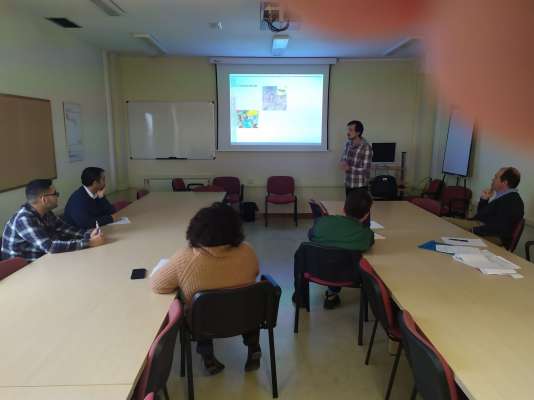
El estudiante de Doctorado, Marcelo Fernandes, de la Universidad de Lisboa, termina con éxito su estancia de dos meses en el GFAM
Marcelo ha podido avanzar en la realización de su tesis, sobre todo en los aspectos relacionados con las dataciones con cosmogénicos. Sus trabajos se han podido discutir con todos los miembros del GFAM
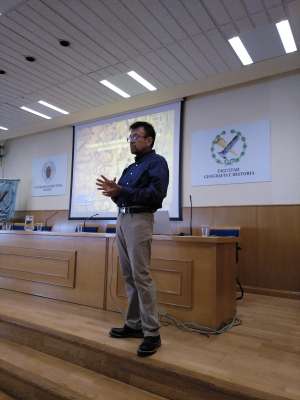
El Dr. Jose Juan Zamorano Orozco (UNAM) termina su estancia de un mes en el GFAM
El Dr. Zamorano ha realizado una intensa actividad investigadora en el GFAM con la cartografía de numerosos glaciares rocosos de Islandia y del valle de Arán (Pirineos).
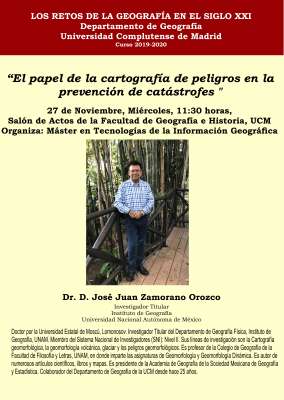
El Dr. Jose Juan Zamorano Impartirá una conferencia con título: "El papel de la cartografía de peligros en la prevención de catástrofes"
El día 27 de noviembre a las 11,30 en el Salón de Actos

El GFAM participa en el High Mountain Summit, cumbre organizada por la Organización Meteorológica Mundial en su sede central de Ginebra, Suiza.
Concedido el premio: YOUNG RESEARCHER INNOVATION AWARD ON CRYOSPHERE SCIENCE AND MOUNTAIN AREAS
Tres jóvenes investigadoras ganan los primeros premios
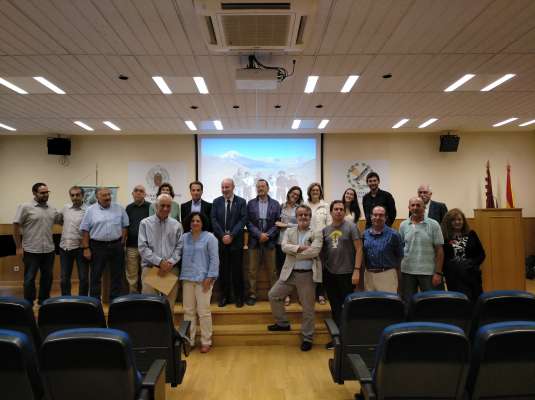
Concedido el premio "Piolet de Honor" al profesor Dr. Augusto Pérez Alberti
Con este motivo, el profesor Pérez Alberti impartió una magistral conferencia sobre los procesos fríos en las montañas de Galicia
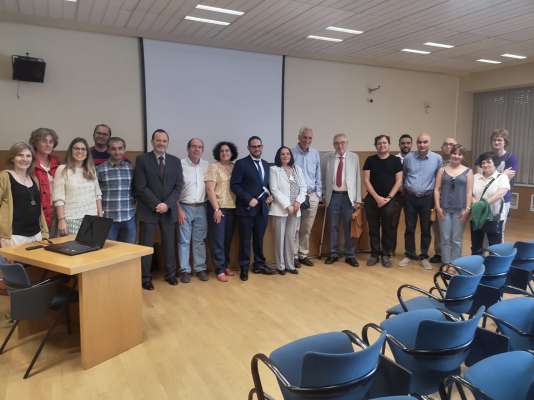
Jose María Fernández Fernández defendió su tesis el pasado día 18 de septiembre de 2019
SOBRESALIENTE CON LAUDE
_not_tb.jpg)
Los profesores Nuria de Andrés y David Palacios realizan una estancia de seis meses en la Universidad de Colorado, Boulder, EEUU
El objetivo de la estancia es realizar un estudio sobre la evolución de los glaciares rocosos en las Montañas Rocosas en el contexto de la deglaciación.
Jose María Fernández Fernández y Manuel Rodríguez Mena realizan una estancia en el CEREGE para analizar muestras del Norte de Islandia
Mediante este análisis se podrá determinar la edad de las distintas fases de la deglaciación en esta región ártica.
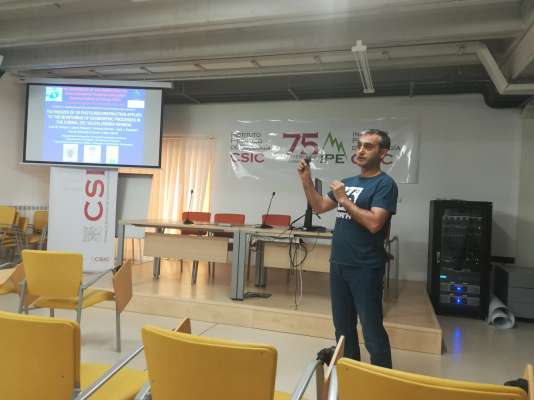
Intensa participación del GFAM en el VII IBERIAN CONFERENCE OF THE OF THE INTERNATIONAL PERMAFROST ASSOCIATION
Jaca, Junio del 2019
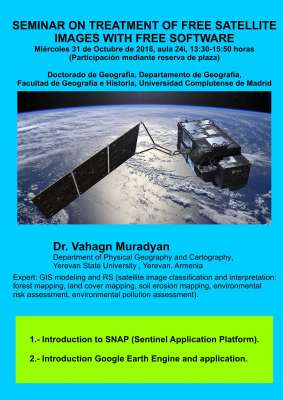
GFAM organiza un curso sobre el uso de imágenes de satélite y plataformas libres, para su aplicación a la criosfera
Impartido por el Dr. Vahagn Muradyan, Department of Physical Geography and Cartography & Cadastre, Yerevan State University (Armenia)
INTERESANTE ARTÍCULO SOBRE LA EVOLUCIÓN DEL GLACIAR DEL MONTE PERDIDO EN EL PAIS
Realizado por el investigador del IPE Jose Ignacio López Moreno
SE TERMINA EL PLAZO DE ENTREGA DE MANUSCRITOS AL: YOUNG RESEARCHER INNOVATION AWARD ON CRYOSPHERE SCIENCE AND MOUNTAIN AREAS
SE INICIA EL PLAZO DE EVALUACIÓN DE LOS MANUSCRITOS
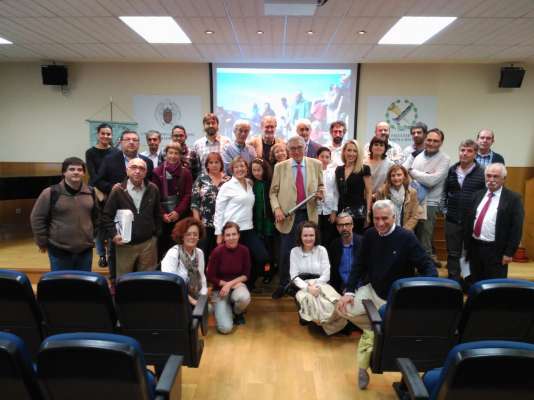
Concedido el Piolet de Honor del GFAM al Dr. Jose María García Ruiz
Despues de su lección magistral con título: “El impacto humano en el paisaje de las áreas de montaña: retos y oportunidades para la geografía”
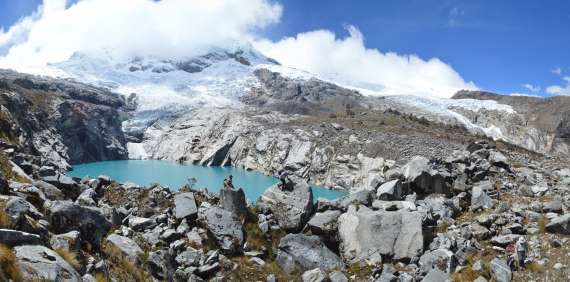
Finalizada con éxito la campaña Campañas de investigación en la Cordillera Blanca y la Cordillera Pariacaca, con participación del GFAM
Durante los meses de julio y agosto de 2018 los profesores Javier de Marcos y José Úbeda (investigadores del GFAM) han participado en dos campañas de investigación en los Andes peruanos, en el marco del proyecto CRYOPERU.
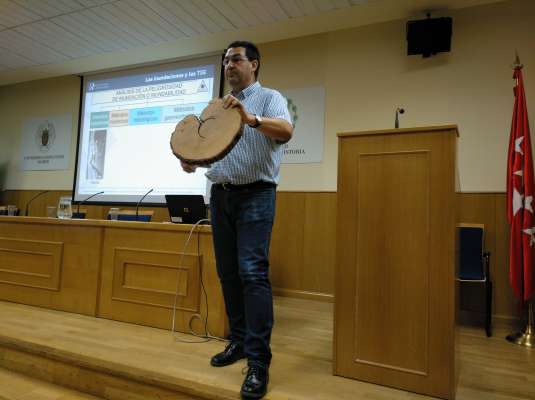
Magnifica conferencia del Dr. Andrés Diaz Herrero sobre prevención de inundaciones, invitado por el GFAM
El Dr. Diaz Herrero impartió la conferencia
Young Researcher Innovation Award in Cryosphere Science and Mountain Areas
THE DEAD LINE FOR THE SUBMISSIONS OF THE MANUSCRIPTS HAS BEEN DELAYED TO OCTOBER 15th. THE EXISTENCE OF NEW DELAYS IS NOT CONTEMPLATED
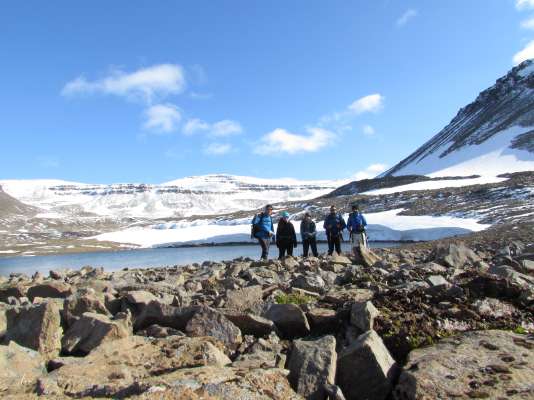
Fieldwork of the project “Mountain Warming” in the Tröllaskagi mountains, Northen Iceland, has been successfully developed between 9 August and 2 September, 2018.
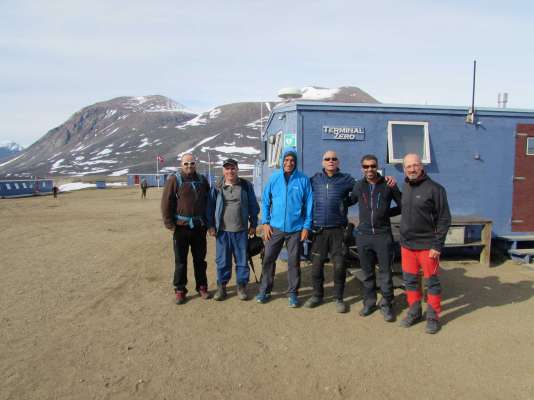
The PALEOGREEN expedition in Zackenberg, north of Greenland, has been developed with great success from July 16 to August 9, 2018
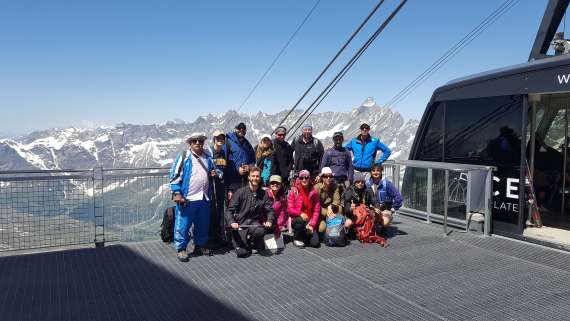
Participación del GFAM al 5th European Conference on Permafrost. Chamonix, Mont Blanc, 2018
Luis Miguel Tanarro participa en la conferencia en representación del GFAM
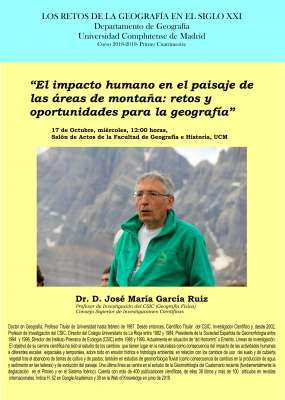
CONFERENCIA “El impacto humano en el paisaje de las áreas de montaña: retos y oportunidades para la geografía”
Dr. Jose María García Ruiz, 17 de Octubre de 2018, miércoles, 12:00 horas, Salón de Actos de la Facultad de Geografía e Historia, UCM
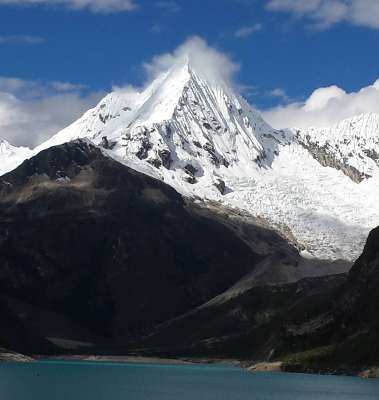
Investigadores del GFAM participarán en campañas de investigación del proyecto CRYOPERU / Researchers of the GFAM will participate in research fieldworks of the CRYOPERU project
Los profesores Jose Úbeda Palenque y Francisco Javier de Marcos García-Blanco participarán en la campaña
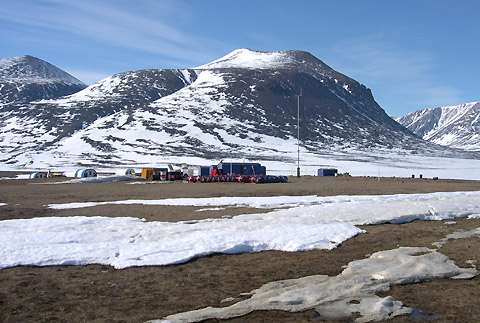
Expedición "PaleoGreen" a Zackenberg en el noreste de Groenlandia / Expedition "PaleoGreen" to Zackenberg in northeastern Greenland
La próxima semana se inicia la expedición "PaleoGreen" a Zackenberg en el noreste de Groenlandia donde participan varios miembros del GFAM
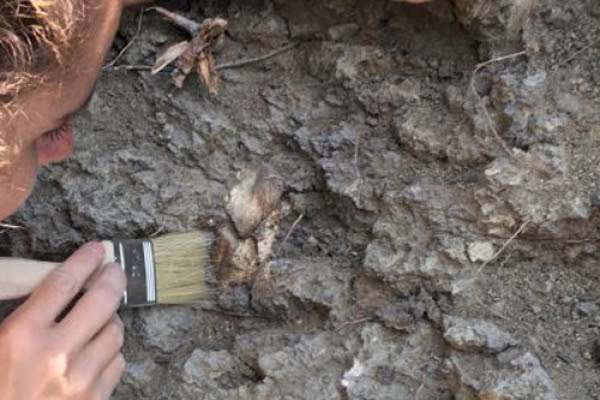
El Dr. José Úbeda Palenque tomó posesión hoy de la plaza de Ayudante Doctor en el Departamento de Geografía de la UCM.
José Úbeda Palenque es Doctor en Geografía desde 2010 por la universidad Complutense e Investigador principal de Cryoperú. Ha sido miembro del GFAM desde su fundación y su representante el la cordillera de los Andes desde 2012.
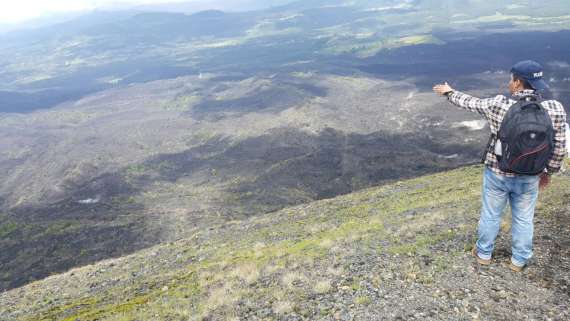
Finaliza la estancia de Juan Carlos de Jesus Rojas (UNAM)
En esta semana terminó la estancia de cinco meses del estudiante de maestría de la Universidad Nacional Autónoma de México
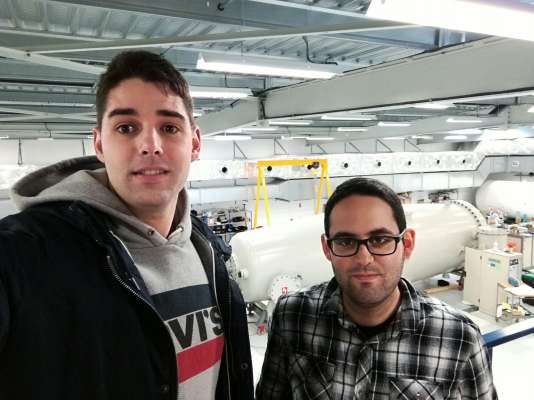
Termina la estancia de Jose María Fernández y Benjamín González en el CEREGE
Jose María Fernández Fernández, del GFAM, junto con Bejamin González ha realizado una estancia de un mes en el CEREGE (Marsella) para trabajar con la Doctora Irene Schimmelpfennig, en el tratamiento de 50 muestras procedentes de la península Bayers
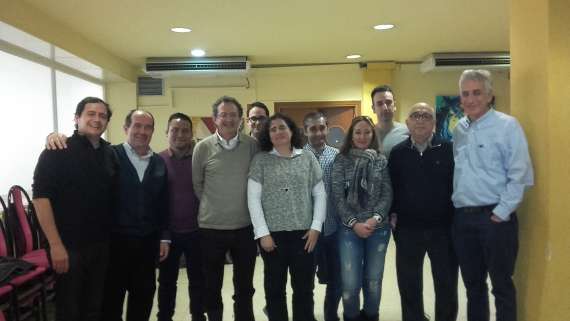
EL GFAM CELEBRA 10 AÑOS DESDE SU APROBACIÓN
Los miembros del GFAM celebraron en una comida de trabajo los 10 años desde la aprobación, donde se decidió preparar la convocatoria del Young Researcher Innovation Award in Cryosphere Science and Mountain Areas
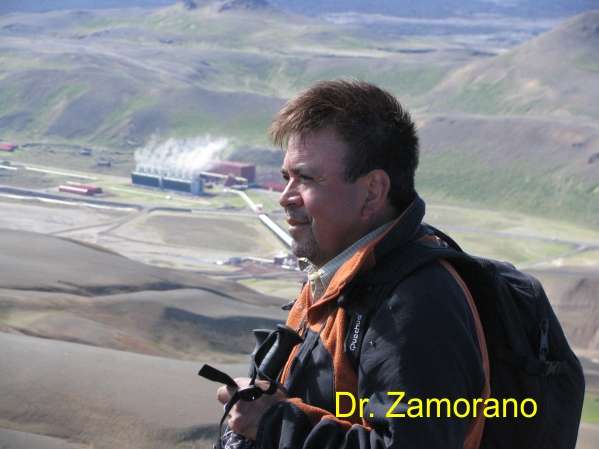
Estancia del Dr. Jose Juan Zamorano Orozco en el Departamento de Geografía de la UCM
del 22 de noviembre al 22 de diciembre del 2017
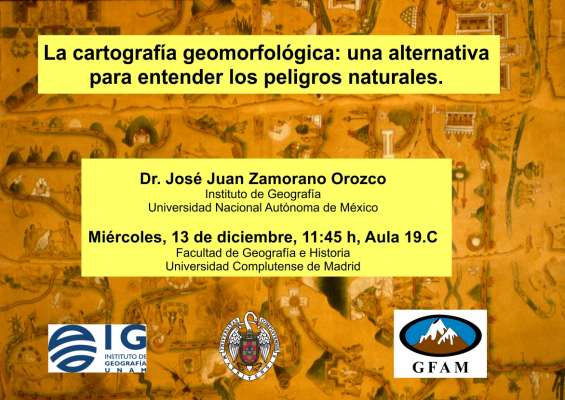
Conferencia "La cartografía geomorfológica: una alternativa para entender los peligros naturales".
La impartirá el Dr. Jose Juan Zamorano Orozco el dia 13 de Diciembre, a las 11,45 en el aula 19.C
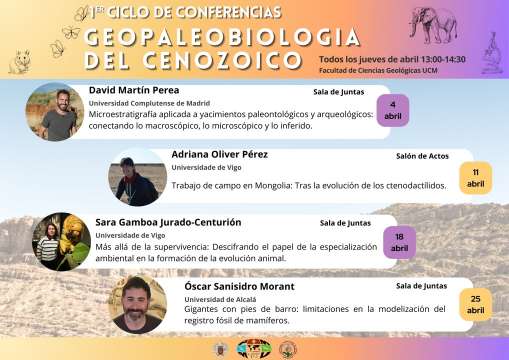
IMPORTANTE IMPACTO DE LA CONFERENCIA SOBRE LA AVENTURA DE HACER CIENCIA EN LA ANTÁRTIDA
Un importante número de alumnos de Grado, Master y Doctorado y profesores participaron con gran interés de la actividad
PUBLICADO UN NUMERO ESPECIAL SOBRE LA DEGLACIACIÓN DE AMERICA EN CUADERNOS DE INVESTIGACIÓN GEOGRÁFICA
A SPECIAL NUMBER ON THE DEGLACIATION OF AMERICA IS PUBLISHED IN CUADERNOS DE INVESTIGACIÓN GEOGRÁFICA
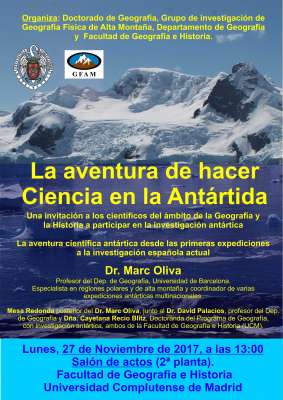
CONFERENCIA LA AVENTURA DE HACER CIENCIA EN LA ANTÁRTIDA
Dr. Marc Oliva Universidad de Barcelona
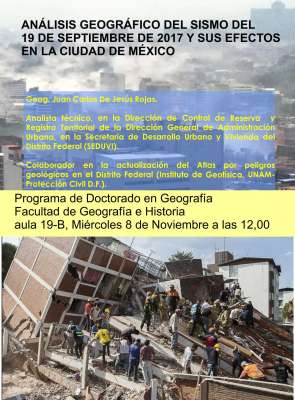
CONFERENCIA SOBRE RIESGOS SÍSMICOS
Juan Carlos de Jesus Rojas UNAM
Participación del Grupo en el VI Congreso Ibérico de la International Permafrost Association (IPA)
Seminario sobre “Estructura, búsquedas bibliográficas y publicaciones en la realización de la tesis doctoral”
DOCTORADO DE GEOGRAFÍA. Jueves, 18 de mayo de 2017, 10:00 h (Aula seminario 21, planta 8); y 12:15 h (Aula de Informática 24-i, planta 2), Facultad de Geografía e Historia. Universidad Complutense de Madrid
Seminario sobre “Metodologías de la investigación en la iniciación de las tesis doctorales sobre el estudio del impacto del cambio climático y prevención de riesgos naturales”
DOCTORADO DE GEOGRAFÍA. Miércoles, 8 de junio de 2016, 10:00 h, Aula 18, Facultad de Geografía e Historia. Universidad Complutense de Madrid
Participación del GFAM en el encuentro de cierre y valoración de futuras posibilidades de cooperación del programa NILS CIencia y Sostenibilidad
26 de mayo de 2016. Aula Miguel de Guzmán. Facultad de Matemáticas (10:00-13:00 h)
